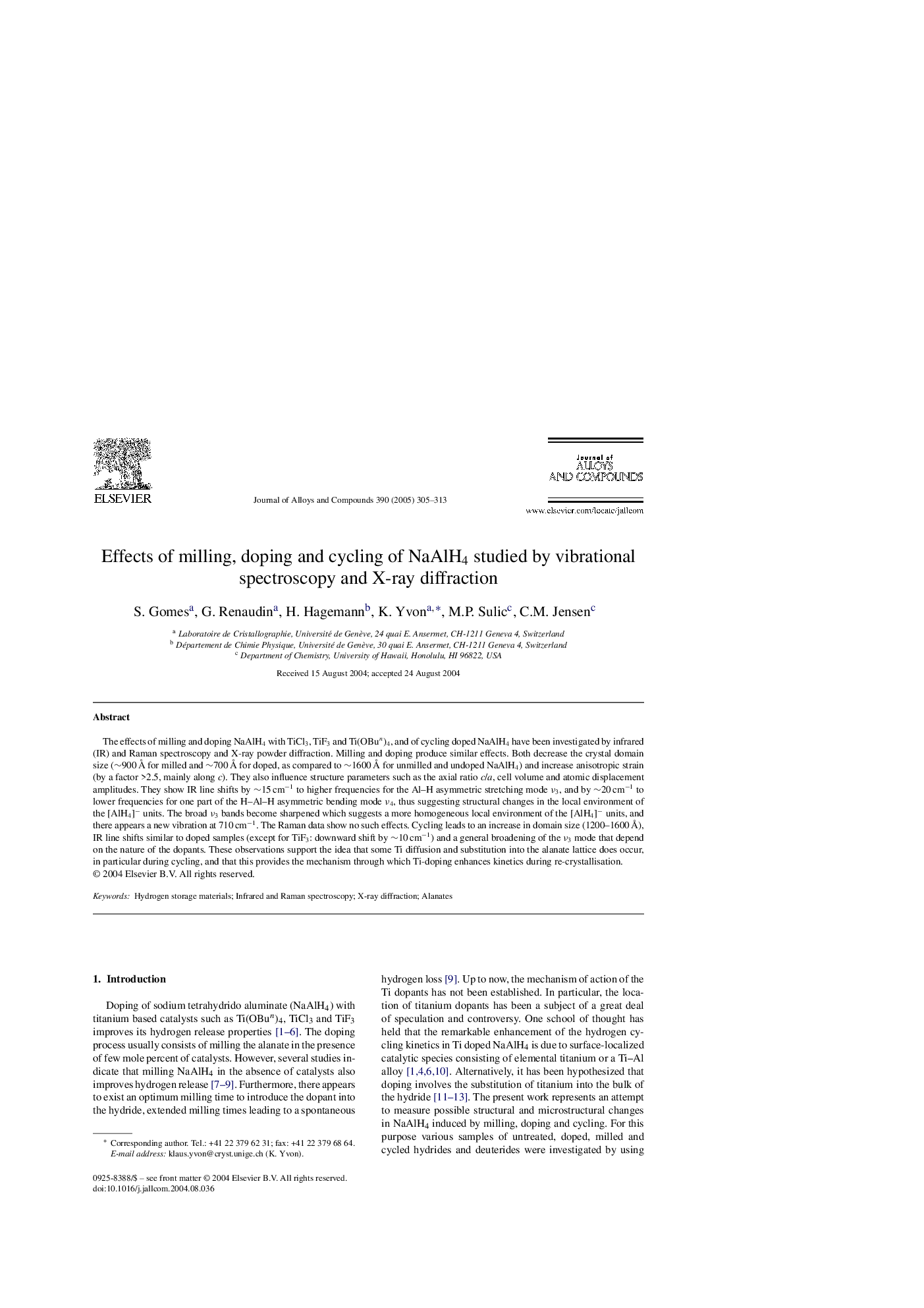| Article ID | Journal | Published Year | Pages | File Type |
|---|---|---|---|---|
| 9804064 | Journal of Alloys and Compounds | 2005 | 9 Pages |
Abstract
The effects of milling and doping NaAlH4 with TiCl3, TiF3 and Ti(OBun)4, and of cycling doped NaAlH4 have been investigated by infrared (IR) and Raman spectroscopy and X-ray powder diffraction. Milling and doping produce similar effects. Both decrease the crystal domain size (â¼900Â Ã
for milled and â¼700Â Ã
for doped, as compared to â¼1600Â Ã
for unmilled and undoped NaAlH4) and increase anisotropic strain (by a factor >2.5, mainly along c). They also influence structure parameters such as the axial ratio c/a, cell volume and atomic displacement amplitudes. They show IR line shifts by â¼15 cmâ1 to higher frequencies for the Al-H asymmetric stretching mode ν3, and by â¼20 cmâ1 to lower frequencies for one part of the H-Al-H asymmetric bending mode ν4, thus suggesting structural changes in the local environment of the [AlH4]â units. The broad ν3 bands become sharpened which suggests a more homogeneous local environment of the [AlH4]â units, and there appears a new vibration at 710 cmâ1. The Raman data show no such effects. Cycling leads to an increase in domain size (1200-1600 Ã
), IR line shifts similar to doped samples (except for TiF3: downward shift by â¼10 cmâ1) and a general broadening of the ν3 mode that depend on the nature of the dopants. These observations support the idea that some Ti diffusion and substitution into the alanate lattice does occur, in particular during cycling, and that this provides the mechanism through which Ti-doping enhances kinetics during re-crystallisation.
Related Topics
Physical Sciences and Engineering
Materials Science
Metals and Alloys
Authors
S. Gomes, G. Renaudin, H. Hagemann, K. Yvon, M.P. Sulic, C.M. Jensen,
